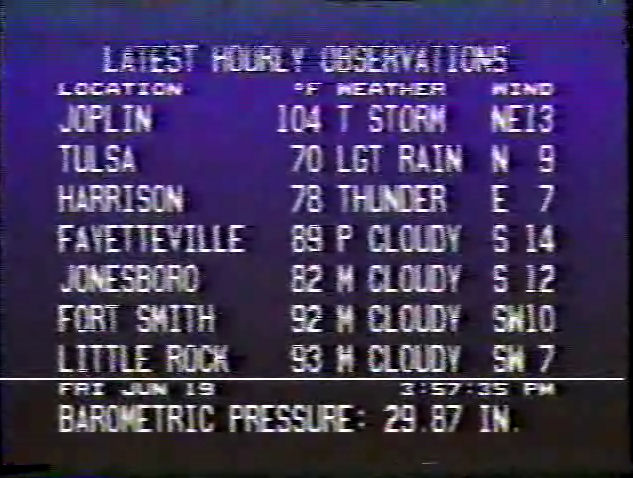Not much to report today, but I’m so enthused about the ideas in one of my recent posts on the Videopac.org forums that I thought I’d just reprint ’em here:
This squared so well with something that I’ve been thinking for a couple of years now that I thought it bears repeating:
Gert-Jan wrote:
Why not design a new combined Videopac/Odyssey2 style from scratch??
You all put a lot of work in all those releases. I think you deserve your own design, instead of imitating PHILIPS/Magnavox/Parker, who lacked the commitment to publish these games.
I really do like the designs for MI/PT and PPP I’ve seen here. On the other hand, it feels a little like rewriting history to me.
 By all means, let’s rewrite history. Complete sea changes in video game packaging aren’t a total unknown – look at Atari’s switch from its colorful 70s style to the silver-with-red-band style of the 80s. I think there’s ample evidence that Philips was already slowly dismantling the very, very 70s style of packaging and marketing material established by Magnavox. New catalogs were showing an Odyssey2 logo in a Serpentine Bold style font, not the “zooming” version used since 1978. And even some of the Odyssey3 prototypes seemed to have a badge that confirmed a move into a more modern style. Chances are, had the O3 taken off, the old O2 style of packaging would’ve been out the door. It just wasn’t in keeping with the times.
By all means, let’s rewrite history. Complete sea changes in video game packaging aren’t a total unknown – look at Atari’s switch from its colorful 70s style to the silver-with-red-band style of the 80s. I think there’s ample evidence that Philips was already slowly dismantling the very, very 70s style of packaging and marketing material established by Magnavox. New catalogs were showing an Odyssey2 logo in a Serpentine Bold style font, not the “zooming” version used since 1978. And even some of the Odyssey3 prototypes seemed to have a badge that confirmed a move into a more modern style. Chances are, had the O3 taken off, the old O2 style of packaging would’ve been out the door. It just wasn’t in keeping with the times.
So let’s play with some ideas of what would’ve been, maybe even with an eye toward implementing them for future releases? I understand the call for a traditional approach on repro releases of unreleased 80s games, but look at the problems we already run into – should it be Odyssey2 style or Philips Videopac style? Well…what if those were one and the same?
 (Click on “Mission Impossible” thumbnails for really, really big versions; the “Martian Threat” thumbnail is another example I threw together as an afterthought.)
(Click on “Mission Impossible” thumbnails for really, really big versions; the “Martian Threat” thumbnail is another example I threw together as an afterthought.)
The concept: a double-fronted box. Flip it over, and you see the other cover. Those who want an O2 box to display would have what they want, and the same for the Philips Videopac crowd. (I could even see eliminating the “2” from “Odyssey” – I don’t think there’s any realistic expectation of a new Magnavox Odyssey homebrew that these could be confused with, and that would also make Brazilian Odyssey collectors happy, since to them, the Odyssey2 is the Odyssey.)
 Now, here’s an even more radical concept: have the boxes printed up in a stock size that’s just big enough to hold the cartridge and a one-sheet mini-manual, folded into quarters or sixths. We’re talking slightly bigger than a pack of playing cards. This way, you have a box that meets the minimum needs of protecting and displaying your cart, but the homebrew makers aren’t going broke trying to approximate the fancy-folded O2 cardboard containers, or trying to come up with empty Videopac plastic cases.
Now, here’s an even more radical concept: have the boxes printed up in a stock size that’s just big enough to hold the cartridge and a one-sheet mini-manual, folded into quarters or sixths. We’re talking slightly bigger than a pack of playing cards. This way, you have a box that meets the minimum needs of protecting and displaying your cart, but the homebrew makers aren’t going broke trying to approximate the fancy-folded O2 cardboard containers, or trying to come up with empty Videopac plastic cases.
This would probably also help move more cartridges at gaming expos and the like.
Rationales on where everything is:
“Lost Treasures Series”: The original O2 line had the Challenger Series and Voice Series, and the Philips Videopac had Plus series games. This corner graphic could be anything – “New Classics” (homebrews), “Applications Series” (believe it or not, such a thing is about to come out!), “Lost Treasures” (unreleased protos), etc.
“Originally released by…”: For “Lost Treasures,” identifies and gives credit to the original producer of the game; for homebrews, would say something like “Designed and programmed by…” and the programmer’s name. Credit where it’s due.
“Also compatible with…”: This could also be, for something like Interpol, “May not be compatible with Odyssey2 game system” or what have you. Or, for Philips Videopac+ games, “Compatible with Odyssey3 Prototype Consoles” or somesuch. Imagine having something like KTAA being the first-ever boxed O3 game!
Anyway, that was the post I made at Videopac.org. For those not in the know, explanations aplenty follow. … Read more
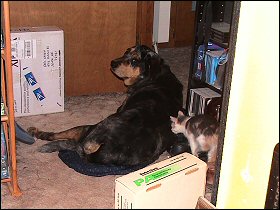
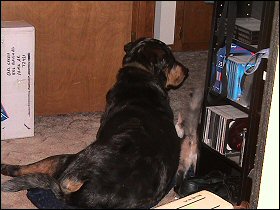
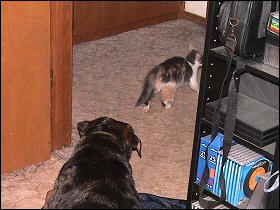



 Now, here’s an even more radical concept: have the boxes printed up in a stock size that’s just big enough to hold the cartridge and a one-sheet mini-manual, folded into quarters or sixths. We’re talking slightly bigger than a pack of playing cards. This way, you have a box that meets the minimum needs of protecting and displaying your cart, but the homebrew makers aren’t going broke trying to approximate the fancy-folded O2 cardboard containers, or trying to come up with empty Videopac plastic cases.
Now, here’s an even more radical concept: have the boxes printed up in a stock size that’s just big enough to hold the cartridge and a one-sheet mini-manual, folded into quarters or sixths. We’re talking slightly bigger than a pack of playing cards. This way, you have a box that meets the minimum needs of protecting and displaying your cart, but the homebrew makers aren’t going broke trying to approximate the fancy-folded O2 cardboard containers, or trying to come up with empty Videopac plastic cases.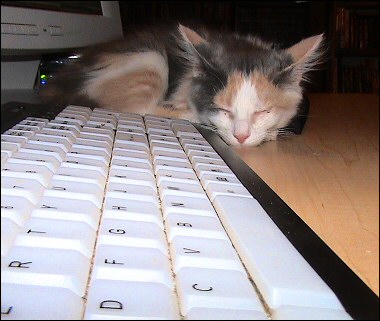
 I hate this. I hate writing this so much.
I hate this. I hate writing this so much. In our last installment, I mentioned that the decision had finally been made to get Hannah away from Boss before she did him grievous bodily harm. We’ve done that, but we may have done it too late. Boss is now on the horse equivalent of baby formula, and a fresh batch has to be mixed up and brought to him every 3 hours. Guess who gets to do that?
In our last installment, I mentioned that the decision had finally been made to get Hannah away from Boss before she did him grievous bodily harm. We’ve done that, but we may have done it too late. Boss is now on the horse equivalent of baby formula, and a fresh batch has to be mixed up and brought to him every 3 hours. Guess who gets to do that? An update on Hannah’s colt: thankfully, he’s getting to nurse and get some more mother’s milk, but she’s still attempting to reject him. The good news is, it now takes only one person to hold Hannah on a halter and lead rope to get the little fart fed. (Not quite 24 hours ago, it was taking 3-4 people to keep Hannah from biting her kid while he was getting his milk, and Hannah had to be twitched as well as haltered.) She’ll still attempt to nip at him if you give her too much room to maneuver. I’ve had the “overnight shift” of going to the farm every two hours to try to buy Boss half an hour of feeding time. …
An update on Hannah’s colt: thankfully, he’s getting to nurse and get some more mother’s milk, but she’s still attempting to reject him. The good news is, it now takes only one person to hold Hannah on a halter and lead rope to get the little fart fed. (Not quite 24 hours ago, it was taking 3-4 people to keep Hannah from biting her kid while he was getting his milk, and Hannah had to be twitched as well as haltered.) She’ll still attempt to nip at him if you give her too much room to maneuver. I’ve had the “overnight shift” of going to the farm every two hours to try to buy Boss half an hour of feeding time. … 